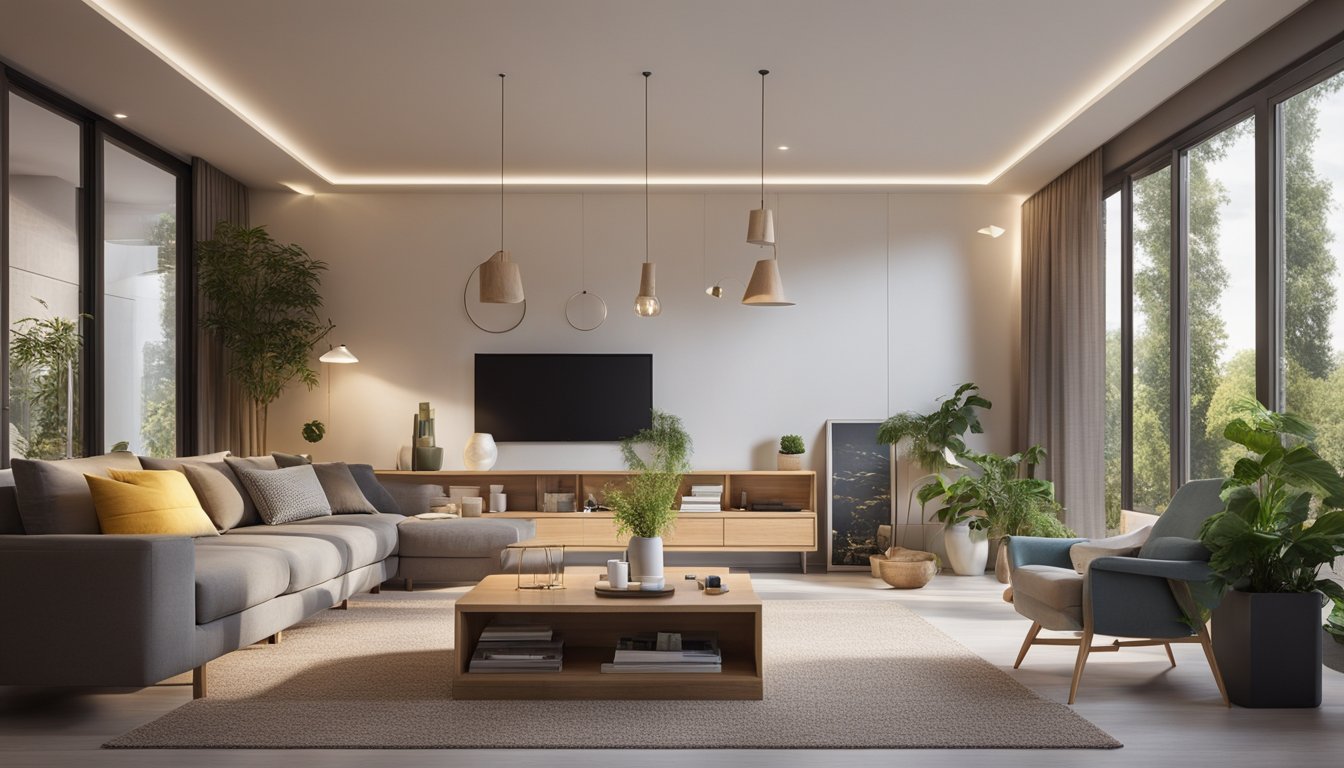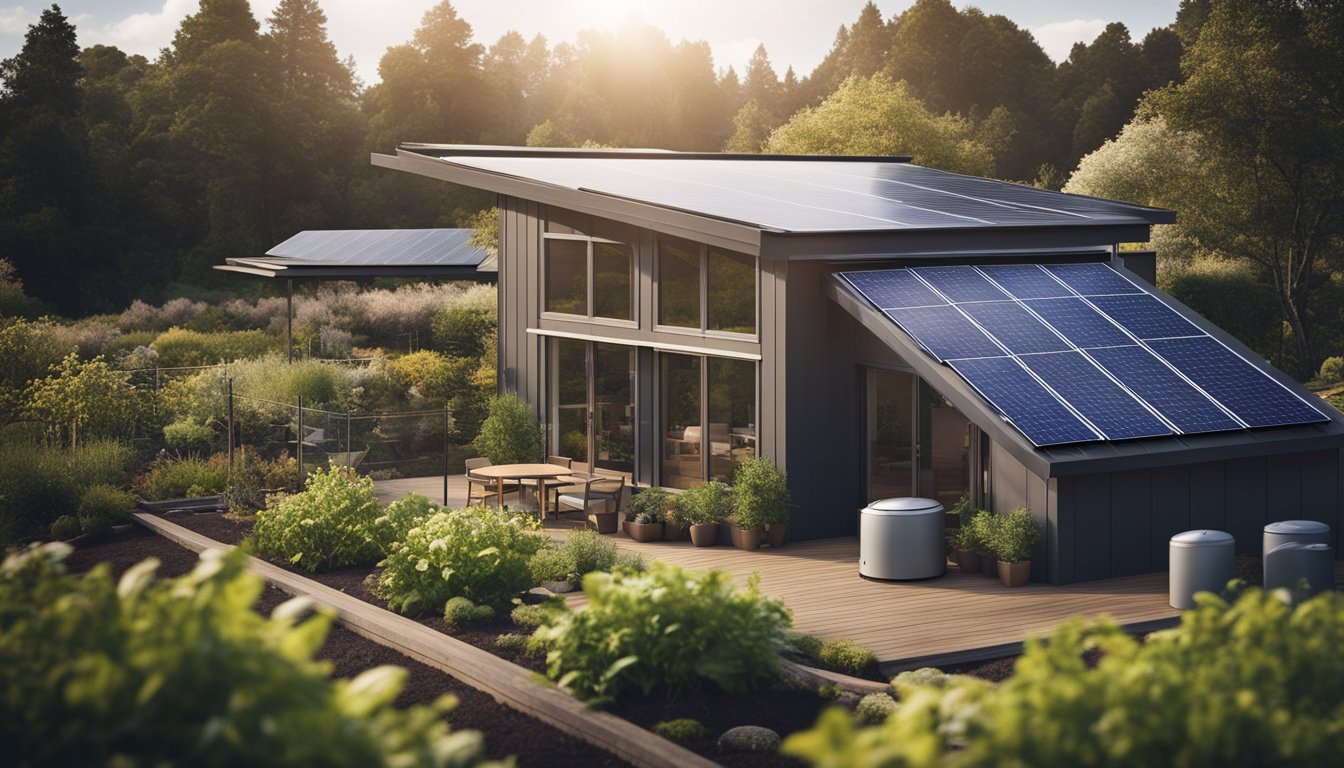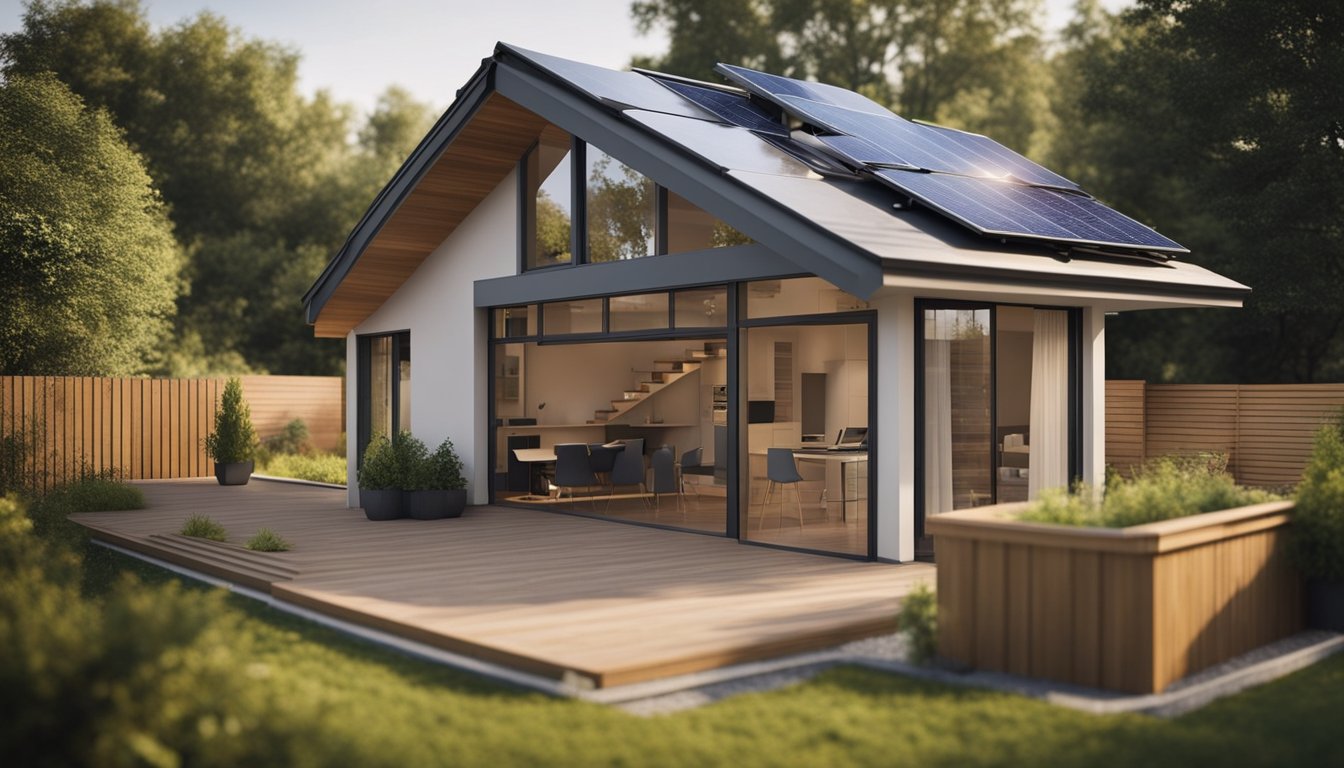Late updated: 21 Jul 2024 10:07
Written by: Daniel Harper
Sustainable Solutions for Home Renovation Projects: Top Eco-Friendly Practices
In today's era, home renovation projects offer a unique chance to embrace sustainability. Implementing eco-friendly solutions can greatly enhance your home's energy efficiency while reducing your carbon footprint. From energy-saving windows to induction stoves, integrating green technology into your renovation plans can lead to both immediate and long-term benefits.

Efficient planning is the cornerstone of any sustainable home renovation. We need to set clear goals to utilise non-toxic materials, prioritise energy-saving appliances, and embrace renewable energy sources like solar panels. Thoughtful planning helps not only in achieving an eco-friendly living space but also in effectively managing and reducing waste throughout the process.
Modern sustainable solutions offer practical benefits. For instance, replacing outdated windows with energy-efficient variants can significantly cut heating and cooling costs. Similarly, upgrading to induction stoves, which are 84% energy efficient, means we can prepare meals faster and more safely. By incorporating these innovations, we create a more comfortable, sustainable home.
Key Takeaways
- Sustainable solutions enhance energy efficiency and reduce carbon footprint.
- Clear planning ensures effective use of materials and waste reduction.
- Modern upgrades offer immediate and practical benefits in sustainability.
Planning Your Sustainable Home Renovation

Embarking on a sustainable home renovation requires careful planning and consideration of various elements. From evaluating your current energy use to selecting eco-friendly materials and working with green professionals, each step is crucial for an effective and environmentally friendly home overhaul.
Assessing Current Energy Use
Before diving into a renovation, it is essential to conduct a thorough energy assessment of your home. This helps identify areas where energy is lost and opportunities for improvement.
Use an energy audit tool or hire a professional to inspect insulation, windows, and heating systems. Identifying issues such as poor insulation or old, inefficient windows can significantly reduce your carbon footprint once addressed.
Implementing changes based on these assessments, like updating to energy-efficient windows and enhancing insulation, can not only reduce energy bills but also contribute to a sustainable and more comfortable living environment.
Choosing Sustainable Materials
Selecting the right materials is a cornerstone of sustainable renovation. We should prioritise sustainable materials such as recyclable, reclaimed wood, and bamboo. These materials reduce the strain on natural resources and minimise waste.
Reclaimed wood can add character to interiors while being eco-friendly, and bamboo is both durable and rapidly renewable. It's also wise to choose low-VOC (volatile organic compounds) paints and finishes to ensure indoor air quality remains healthy.
For insulation, consider materials made from recycled content, which can provide excellent thermal properties without harmful environmental impacts. Careful selection of renewable and recycled materials ensures longevity and sustainability in our renovation projects.
Working with Eco-conscious Professionals
Collaborating with professionals who prioritise eco-friendly practices is vital. Engage an architect or an interior designer with a track record of sustainable projects. Their expertise in renewable resources and green building techniques can guide the renovation process smoothly.
When choosing contractors, confirm their commitment to sustainable renovation by asking about their waste management practices and materials sourcing.
Verify that all professionals involved understand the importance of reducing the carbon footprint through sustainable methods and share our goal of creating a green home. This ensures all aspects of the renovation are aligned with eco-conscious principles, resulting in a successful and sustainable transformation.
Implementing Sustainable Solutions

When planning a sustainable home renovation, we focus on energy efficiency, integration of renewable energy sources, smart home technologies, and eco-friendly decor. By adopting these measures, we can significantly reduce our environmental impact and create a comfortable living space.
Energy-Efficient Design and Insulation
Improving energy efficiency is essential in sustainable renovations. By using high-quality insulation materials such as cellulose or foam, we reduce energy loss. This retains heat during winter and keeps the home cool in summer.
We can also enhance efficiency by designing with natural light in mind, reducing the need for artificial lighting. Installing Energy Star rated appliances, LED lighting, and low-flow fixtures contributes to lower energy and water consumption, critical in addressing climate change.
Incorporating Renewable Energy
Incorporating renewable energy sources like solar panels can drastically reduce carbon emissions. Solar panels convert sunlight into electricity, reducing reliance on fossil fuels. Integrating heat pumps and programmable thermostats further optimises energy usage.
Rainwater harvesting systems can be installed to collect and utilise rainwater for irrigation and household use, reducing dependency on municipal water supplies. These measures collectively enhance sustainability and self-sufficiency in our homes.
Utilising Smart Home Technologies
Smart home technologies play a crucial role in sustainable living. Smart thermostats and programmable thermostats allow precise control over home temperatures, ensuring energy isn't wasted. They can adjust heating and cooling based on our schedules, maximising efficiency.
Smart lighting systems can be set to turn off when rooms are unoccupied, and energy-efficient appliances can be monitored for optimal performance. These technologies not only improve energy efficiency but also add convenience and cost savings.
Eco-Friendly Decor and Landscaping
Eco-friendly decor involves using sustainable materials like bamboo or reclaimed wood for furniture and fixtures. Natural finishes like non-toxic paints and varnishes should be chosen to improve indoor air quality and reduce pollution.
In terms of landscaping, incorporating native plants that require less water and maintenance supports biodiversity and limits water use. Garden decorating with elements such as rain gardens or green roofs can manage stormwater better and provide insulation, further contributing to an eco-friendly habitat.
Frequently Asked Questions
In sustainable home renovations, it's crucial to focus on energy efficiency, renewable resources, eco-friendly materials, water conservation, and contemporary trends to create a more environmentally responsible living space.
What are the key principles of sustainable remodelling for homes?
Key principles of sustainable remodelling include using non-toxic and natural materials, prioritising energy efficiency, and reducing waste through recycling and reuse. Planning is essential, setting clear goals such as incorporating renewable energy sources like solar panels and ensuring the home's design minimises environmental impact.
In what ways can homeowners incorporate renewable energy in home renovations?
Homeowners can integrate renewable energy solutions such as solar panels, wind turbines, and geothermal heating and cooling systems. Installing energy-efficient windows and insulation can also help. Enhancing natural light with skylights reduces the reliance on artificial lighting, cutting down on energy usage and costs.
What environmentally friendly materials are recommended for home improvement projects?
Eco-friendly materials for home renovations include reclaimed wood, bamboo, cork, recycled metal, and low-VOC (volatile organic compounds) paints. Insulation options like sheep's wool or recycled denim are sustainable choices that provide excellent thermal performance without harming the environment.
How can water efficiency be maximised in a residential renovation?
To maximise water efficiency, consider installing low-flow fixtures and appliances, such as dual-flush toilets and water-saving showerheads. Rainwater harvesting systems can be implemented to use in gardening or flushing toilets. Greywater systems can also recycle water from sinks and showers for irrigation or toilet flushing.
What are the latest trends in sustainable home renovations for 2024?
In 2024, some of the latest trends include increasing the use of smart home technology to monitor and reduce energy consumption. Green roofs and living walls are becoming more popular for their aesthetic appeal and insulation properties. Biophilic design, which incorporates natural elements into the home, is also gaining traction.
How does sustainable renovation improve a home's energy efficiency?
Sustainable renovation improves energy efficiency by enhancing insulation, installing energy-efficient windows and doors, and incorporating renewable energy systems. Upgrading to smart thermostats and energy-efficient HVAC systems also plays a significant role. These improvements reduce energy consumption and greenhouse gas emissions, leading to lower utility bills and a smaller carbon footprint.
